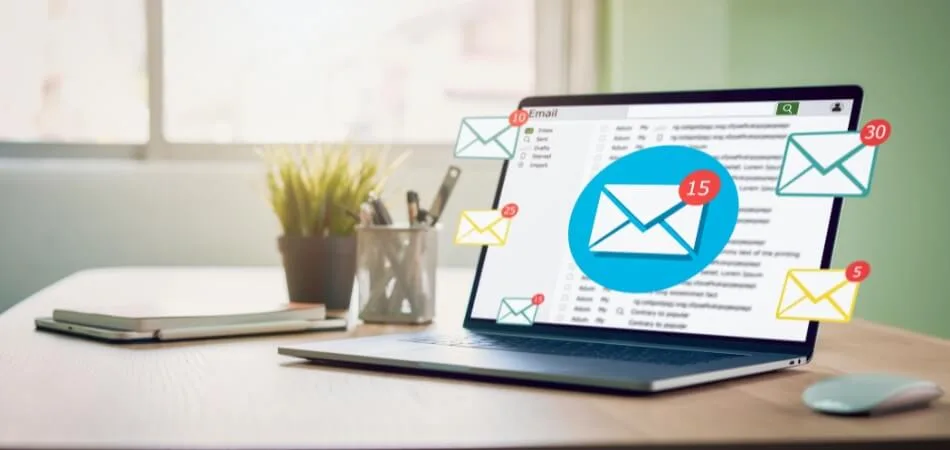Effective communication is essential in today’s hectic professional environment, particularly when planning large-scale gatherings like conferences. One critical aspect of this is ensuring participants are well-informed and engaged. This brings us to an important question: How do you send a reminder email for a conference?
The key lies in compactly restating the event’s details, emphasizing any important updates or highlights, and infusing the message with a sense of enthusiasm. A well-crafted email should also prompt action, urging recipients to confirm their attendance or peruse the event schedule.
By striking a balance between brevity and professionalism, such emails can significantly boost participant readiness and excitement. Keep reading to discover more insights and practical tips on crafting these essential communications.
The Importance of Reminder Emails
Reminder emails play a pivotal role in ensuring the success of conferences. They act as gentle nudges, keeping the event fresh in attendees’ minds. Strategically sent, these reminders can significantly boost turnout and engagement.
In the digital age, where inboxes are often cluttered, a well-timed reminder email stands out. It offers a quick recap of the event details, helping attendees plan their schedules effectively. This can be particularly helpful for busy professionals who appreciate concise, relevant updates.
Moreover, reminder emails provide an excellent opportunity to build excitement and anticipation. They can highlight key speakers or sessions, sparking interest and encouraging active participation. This approach not only enhances the event experience but also fosters a sense of community among participants.
Who Should Receive the Reminder Emails?
Reaching the correct audience is essential for the successful distribution of conference reminder emails. These emails are not just about reiterating information; they’re about ensuring that all key participants are looped in and prepared. Here is the exploration of who should receive the reminder emails.
Registered Attendees
Registered attendees are the most obvious recipients. Reminder emails for them reiterate event specifics, reinforce their decision to attend, and include interactive elements like a link to the event app. They keep the conference top-of-mind for those who have already shown interest.
Speakers and Presenters
For speakers and presenters, reminder emails are critical for logistical coordination. These communications can contain personalized schedules, technical requirements, and audience insights. They help ensure that speakers are well-prepared and understand their audience, enhancing the quality of their presentations.
Event Sponsors and Partners
Event sponsors and partners, vital for financial and promotional support, should receive updates emphasizing their valued contribution. These emails might include information on branding opportunities, event exposure, and networking possibilities. Keeping them informed and engaged strengthens their investment in the event’s success.
Media Representatives
Media representatives require reminders that cater to their specific needs. Information on press conferences, key speakers, and notable sessions can be included. Effective communication with the media ensures broader coverage and public interest in the event.
Volunteers and Staff
Volunteers and staff, essential for the smooth operation of the event, need detailed reminders about their roles and responsibilities. Including information on schedules, venue layouts, and emergency procedures ensures a well-organized and efficient event.
Potential Attendees
Potential attendees who expressed interest but haven’t committed are crucial targets. Reminders to them should highlight what’s unique about this conference and any registration deadlines. This can convert their interest into actual attendance, boosting overall numbers.
Reminder emails should be strategically sent to all groups involved in the conference. This ensures everyone is informed, prepared, and excited, contributing to a successful and memorable event.
How Do You Send a Reminder Email for a Conference?
Organizing a successful conference involves not just planning but also effective communication. A crucial aspect of this communication is sending reminder emails. These emails play a significant role in keeping attendees informed and engaged. Here’s a step-by-step guide on how do you send a reminder email for a conference:
Step 1: Choose the Right Timing
Selecting the optimal time to send a reminder email is crucial. Ideally, dispatch the first reminder one month in advance and follow up with another one to two weeks before the event. This strategy prevents your email from getting overlooked and provides attendees with sufficient time to arrange their schedules.
Step 2: Craft a Clear and Engaging Subject Line
The subject line is the first thing recipients see. It should be concise, clear, and intriguing, giving a snapshot of the email’s content. A compelling subject line greatly increases the likelihood of your email being opened and read.
Step 3: Provide Essential Information
Begin with a friendly greeting, then concisely reiterate the conference’s fundamental details – date, time, location, and purpose. Keep it brief yet comprehensive, ensuring attendees have all critical information readily available. This clarity helps in avoiding confusion and enhances the overall attendee experience.
Step 4: Highlight Important Updates or Features
Mention any new developments or unique aspects of the conference. This could include highlighting keynote speakers, special sessions, or unique networking opportunities. Emphasizing these elements can rekindle interest and anticipation, particularly for those who might still be undecided about attending.
Step 5: Include a Call-to-Action
Conclude your email with a distinct call to action. This might be an invitation to confirm attendance, view the detailed agenda, or visit the conference website for further information. A strong call to action is essential for engaging the recipients and encouraging them to take the next step.
Step 6: Ensure a Professional Tone and Layout
Maintain a professional tone throughout the email and use a clean, organized layout. Employ branded headers if available and choose a legible font. Thoroughly proofread for any grammatical or spelling errors to uphold professionalism and credibility.
By following these steps, you can create effective and engaging reminder emails for your conference. Such emails are not just about sharing information but also about building excitement and ensuring a great turnout.
Essential Elements You’ll Need to Include in a Reminder Email
Crafting a reminder email for a conference is a subtle art that requires balancing informativeness with brevity. These emails serve as a bridge between organizers and attendees, ensuring everyone is on the same page. Here are some essential elements to include for an effective reminder email.
- Event Name and Purpose: Start with the event’s name and a brief statement of its purpose. This reinforces the event’s significance and reminds the recipient why they were interested.
- Date and Time: Clearly state the date and time of the conference. This is crucial for attendees to plan their schedules and avoid any confusion.
- Venue Details: Include the venue’s name and address. If the event is virtual, provide the necessary online access links.
- Key Highlights: Mention any key speakers, topics, or sessions. This generates excitement and reminds attendees of the value the conference offers.
- Call-to-Action: Add a call-to-action, like confirming attendance or checking the agenda. This prompts the recipient to engage further with the event.
- Contact Information: Provide contact details for further queries or assistance. This shows attendees that support is available if needed.
By including these elements, you can ensure your email is both informative and compelling, setting the stage for a successful event.
Tips on Tracking and Analyzing Reminder Email Performance
Sending reminder emails for a conference is just part of the process; tracking and analyzing their performance is equally important. Understanding the impact of these emails helps in refining communication strategies for future events. Here’s a guide to effectively track and analyze the performance of your reminder emails.
Set Clear Objectives
Before tracking, define what success looks like for your reminder emails. Objectives can range from high open rates to a specific number of registrations. Clear goals help in focusing your analysis and understanding the impact of your emails.
Use Email Analytics Tools
Leverage email analytics tools to track key metrics like open rates, click-through rates, and bounce rates. These tools provide insights into how recipients interact with your emails. Analyzing these metrics helps in identifying what works and what doesn’t.
Monitor Click-Through Rates
Click-through rates indicate how engaging your email content is. If recipients are clicking on links within the email, it suggests that the content is relevant and compelling. Low click-through rates may signal a need for better content or clearer calls to action.
Check Open Rates
Open rates help gauge the effectiveness of your email subject lines. A low open rate might mean your subject lines aren’t compelling enough to prompt recipients to open the email. Experimenting with different subject lines can help in finding what resonates best with your audience.
Analyze Conversion Rates
Conversion rates measure how many recipients completed the desired action, like registering for the conference. This metric is crucial for understanding the actual impact of your emails on registration numbers. If conversion rates are low, consider revising your email content or call-to-action.
Gather Feedback
Don’t underestimate the value of direct feedback. Conduct surveys or ask for feedback through follow-up emails. This qualitative data can provide insights that quantitative metrics might miss.
By focusing on these key areas, you can gain valuable insights into your audience’s preferences and behaviors, enabling you to craft more effective emails for future events.
Conclusion
In our discussion about sending reminder emails for a conference, we delved into various facets essential for effective communication. We began by understanding the importance of these emails in keeping participants engaged and informed, crucial for the success of any conference. Addressing the question how do you send a reminder email for a conference, we explored a step-by-step guide, emphasizing the need for clear timing, engaging subject lines, concise information, highlighting updates, and including a strong call-to-action.
We also identified the key audience segments vital for these communications. Furthermore, we discussed the indispensable elements to include in a reminder email, ensuring it’s informative yet captivating.
We covered strategies for tracking and analyzing the performance of these emails, a critical aspect for refining future communication efforts. This holistic approach ensures that your reminder emails not only convey necessary details but also significantly contribute to the success of your conference.






